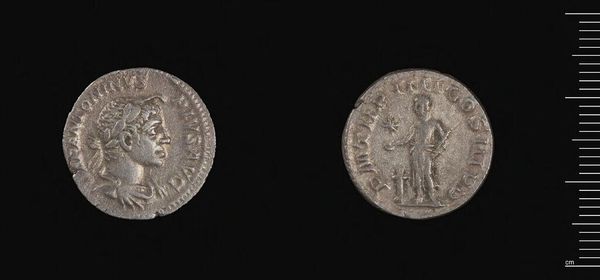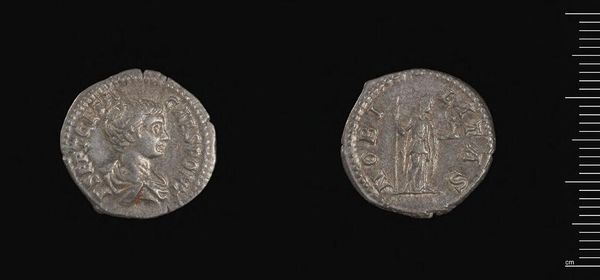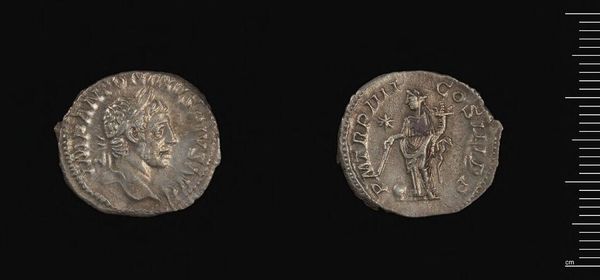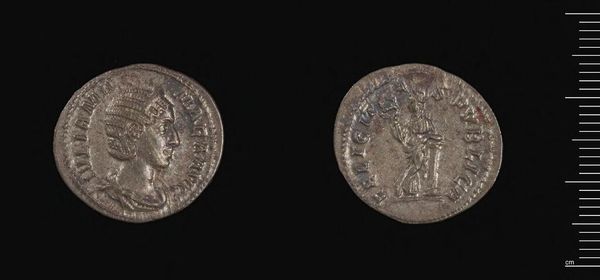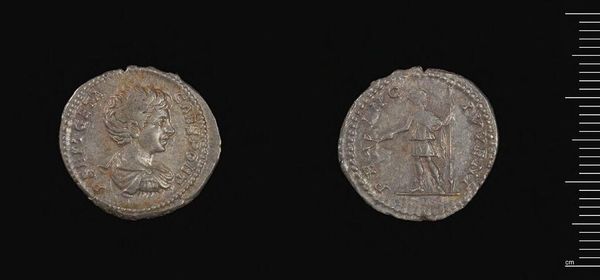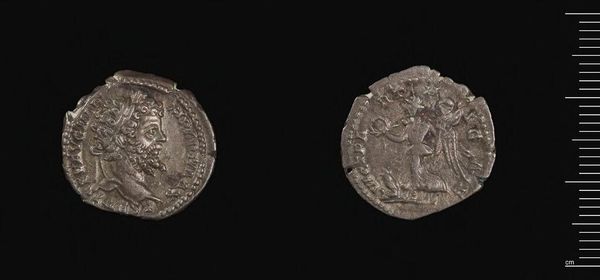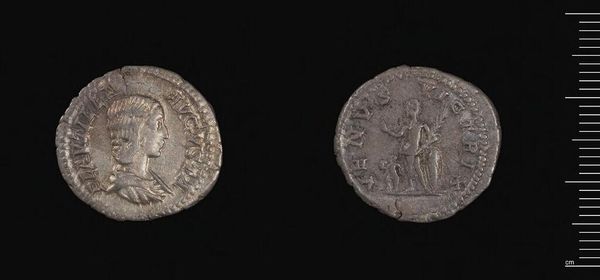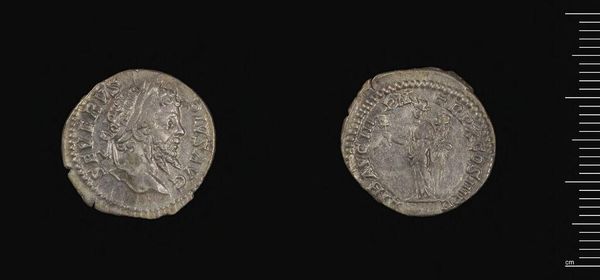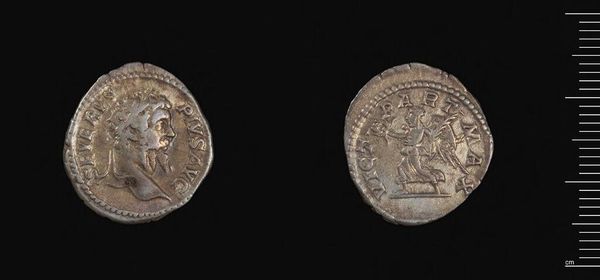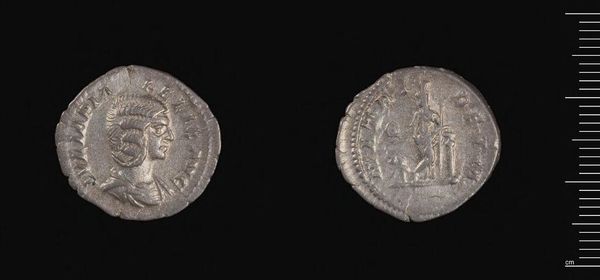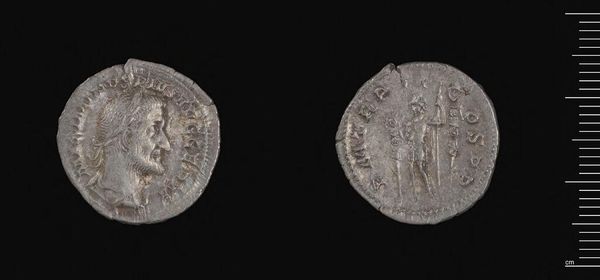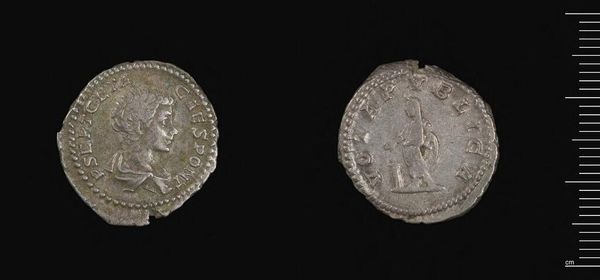
Dimensions: 3.09 g
Copyright: CC0 1.0
Curator: Here we have a silver denarius of Caracalla, a Roman emperor who ruled in the early 3rd century. What catches your eye first about this little piece of history? Editor: The weight of it—literal and figurative. It's a tiny thing, just over 3 grams, yet it's brimming with an emperor's ego and the symbolism of power. It feels strangely potent, no? Curator: Absolutely. The portrait, although small, embodies the idea of Imperial authority. We see the laurel wreath, a symbol of victory and status, reinforcing Caracalla's image. Editor: And then the figure on the reverse. Is that meant to be Caracalla as well, dressed as a soldier or perhaps representing a military virtue? The spear and short tunic speak volumes. Curator: Indeed. It's a representation of military might, of course, but also a claim to legitimacy and strength at a time of internal conflict. It projects an image, despite the turmoil. Editor: It's amazing how much narrative can be packed into such a small, everyday object. A coin wasn't just money; it was propaganda, a portable symbol of Roman identity and power. I guess that's why it's so captivating. Curator: Exactly. It's a glimpse into the past—the ambition, the anxieties, and the visual language they used to communicate it all. A tangible touchpoint with an ancient world. Editor: It's like holding a whisper from the past, a reminder that even empires are built on fleeting images and the stories we tell ourselves.
Comments
No comments
Be the first to comment and join the conversation on the ultimate creative platform.
